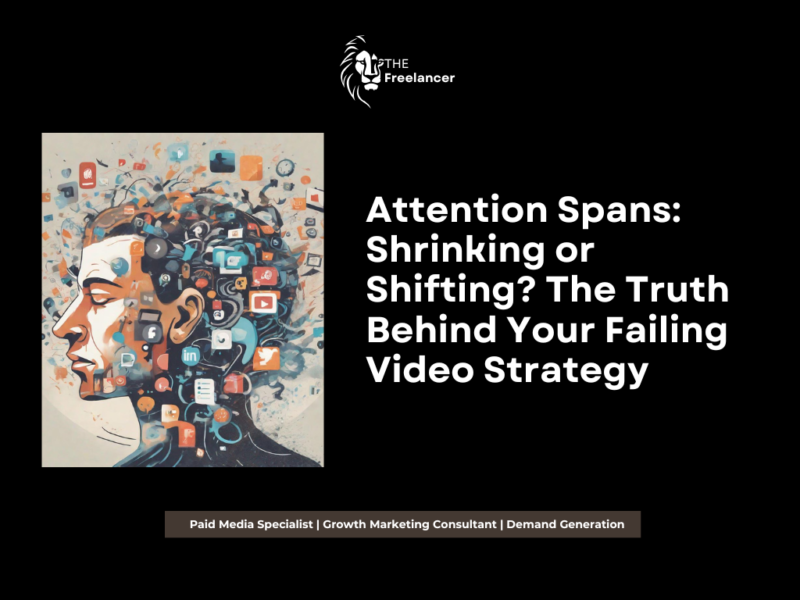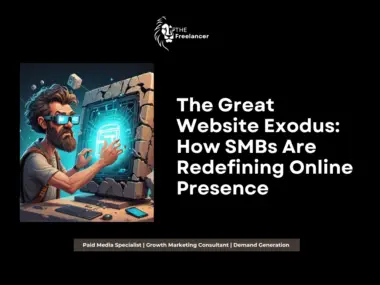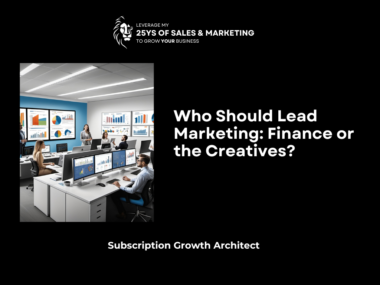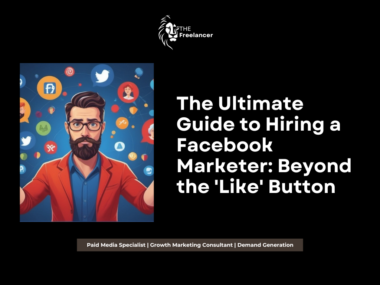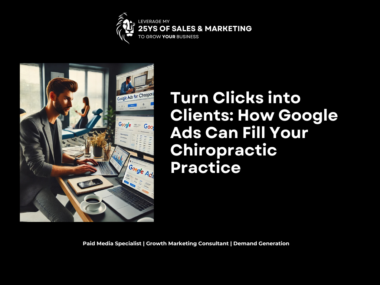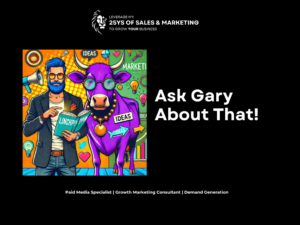In a world where TikTok dances reign supreme and goldfish allegedly have longer attention spans than humans, it’s easy to buy into the narrative that our collective ability to focus is circling the drain faster than your morning coffee. But what if we’ve got it all wrong? What if, instead of our brains turning to mush, we’re actually evolving into hyper-efficient decision-making machines? And more importantly, what does this mean for your video content strategy that’s currently collecting digital dust?
Buckle up, content creators and marketing mavens, because we’re about to challenge everything you think you know about attention spans and video content. Fair warning: sacred cows will be tipped, and your favourite social media guru might just be exposed as a charlatan. Ready to have your mind blown? Let’s dive in.
The Great Attention Span Debate
For years, we’ve been bombarded with headlines screaming that our attention spans are shrinking faster than a wool sweater in a hot dryer. The oft-cited (and widely misinterpreted) statistic that human attention spans have dropped from 12 seconds in 2000 to 8 seconds in 2013 has been parroted more times than a contestant’s sob story on a reality TV show.
But here’s the kicker: that statistic is about as reliable as a chocolate teapot. The source? A study by Microsoft that wasn’t even primarily about attention spans. It’s time to put this zombie statistic out of its misery once and for all.
So, if our attention spans aren’t actually shrinking, what’s really going on?
The Rise of the Hyper-Efficient Decision Maker
Plot twist: What if, instead of becoming less attentive, we’re actually becoming better at making quick decisions about what deserves our attention? In a world of information overload, perhaps we’ve evolved to become ruthlessly efficient filters.
Think about it. When you’re scrolling through your social media feed, you’re not mindlessly flicking your thumb in a daze. You’re making split-second decisions about what’s worth your time. It’s like you’re the Simon Cowell of content, delivering rapid-fire judgments that would make even the harshest reality show judge blush.
This isn’t a sign of diminished attention; it’s a superpower. We’ve become so adept at processing information that we can decide in the blink of an eye whether something is worth our precious time.
The Implications for Video Content
Now, here’s where it gets interesting (and potentially terrifying) for content creators. If people are making faster decisions about what to watch, your video has even less time to make an impression than you thought. But fear not! This isn’t a death sentence for video content; it’s an opportunity to evolve.
Here’s how to adapt your video content strategy for the age of the hyper-efficient decision maker:
1. Ditch the Slow Burn:
Remember those artsy videos that took 30 seconds to get to the point? Yeah, they’re as dead as MySpace. Your video needs to grab attention faster than a cat video in a room full of dog lovers.
2. Embrace the Power of the Thumbnail:
Your thumbnail is no longer just a pretty picture; it’s your video’s resume, cover letter, and first impression all rolled into one. Make it work harder than an intern trying to secure a full-time position.
3. Front-Load the Good Stuff:
Gone are the days of saving the best for last. If your video were a sandwich, put the bacon right up front. Give viewers a reason to stick around in the first 3 seconds, or they’ll be gone faster than free samples at Costco.
4. Master the Art of the Loop:
On platforms like TikTok and Instagram Reels, your video might loop automatically. Use this to your advantage. Create content that’s just as engaging on the second or third watch. It’s like inception, but for social media.
5. Tell a Story, But Make It Snappy:
Humans are hardwired for stories, but modern humans want their stories delivered faster than a pizza in New York City. Learn to tell compelling narratives in bite-sized chunks.
6. Use Pattern Interrupts:
In a sea of sameness, be the content that makes people do a double-take. Unexpected transitions, surprising visuals, or a sudden change in tone can jolt viewers out of their scrolling trance.
7. Optimise for Sound-Off Viewing:
With up to 85% of social media videos watched without sound, your content needs to be as captivating on mute as it is with the volume cranked. Captions aren’t just for the hearing impaired; they’re for everyone scrolling in a boring meeting.
The Controversial Bit: Maybe Your Content Just Isn’t That Good
Here’s a hard truth that might ruffle some feathers: If people aren’t watching your videos, maybe it’s not their attention spans that are the problem. Maybe your content just isn’t as compelling as you think it is.
In a world where everyone and their grandmother is creating content, mediocrity is a death sentence. Your video isn’t just competing with other brands; it’s up against professional entertainers, adorable pets, and that guy who can solve a Rubik’s Cube while skydiving.
The solution? Stop making safe, boring content that ticks all the “best practices” boxes but puts people to sleep faster than a documentary on the history of beige paint. Take risks. Be authentically weird. Create something that people can’t help but watch.
The Attention Economy: A Zero-Sum Game?
Here’s another controversial thought: What if the attention economy isn’t actually a zero-sum game? The prevailing wisdom is that there’s only so much attention to go around, and we’re all fighting for our slice of the pie. But what if that’s not true?
Consider this: Despite the proliferation of content, people are consuming more media than ever before. According to eMarketer, US adults spent an average of 13 hours and 21 minutes per day with media in 2020. That’s up from 12 hours and 24 minutes in 2019.
So maybe the issue isn’t that we have less attention to give, but that we have more options for where to direct it. This means the bar for capturing and holding attention is higher than ever, but it also means there’s more potential attention up for grabs if you can create truly compelling content.
The Ethics of Attention-Grabbing Content
As we chase ever-shorter attention spans (or cater to faster decision-making, depending on your perspective), it’s worth considering the ethical implications of our content strategies.
Are we contributing to a culture of distraction and short-term thinking? Is there a responsibility to create content that not only captures attention but also adds value? Or in the attention economy, is all fair in love and content marketing?
These are questions worth grappling with as we craft our video strategies. After all, just because we can create addictive, attention-grabbing content doesn’t always mean we should.
Conclusion: Adapt or Perish
Whether attention spans are truly shrinking or we’re just becoming more discerning consumers of content, one thing is clear: the way people interact with video content is changing, and creators need to adapt or risk fading into obscurity.
The good news? If you can crack the code of creating content that stops the scroll, you’ll have mastered one of the most valuable skills in the modern attention economy. The bad news? There’s no magic formula, and what works today might be old news tomorrow.
So, dear content creator, are you ready to evolve? Are you prepared to challenge your assumptions, take risks, and create video content that doesn’t just capture attention, but deserves it?
The scroll stops here. What will you do with it?
